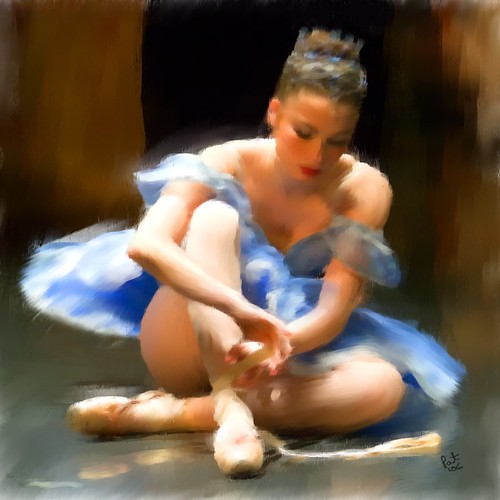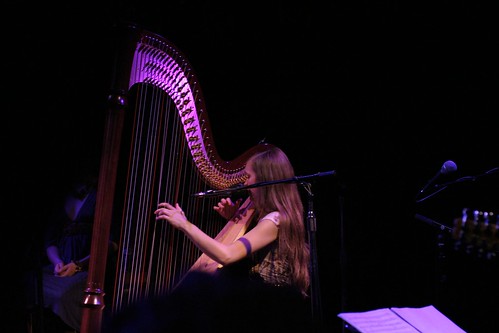When you play a piece like Tchaikovsky’s Nutcracker Ballet time after time, year after year, sometimes you long for something (anything!) different to happen. Variety is good, even if it is a bad kind of variety. Well, last year at the Milwaukee Ballet we had some REAL variety down in the pit that I would like to share with you.
Our rock-solid harpist was taking a rare performance off, and we had a substitute harpist in her place. Now, I have worked with this harpist many times over the years, and she is a very good orchestral musician with years of experience in major orchestras. What happened while she was subbing at the Milwaukee Ballet for this performance was like something out of the Twilight Zone.
The Nutcracker was progressing smoothly for the first half of the performance that evening. We breezed through this music without a hitch, and all cylinders were firing for the second half as well. Things sounded great. Then we got to the Waltz of the Flowers.
The Waltz of the Flowers is one of the most famous movements in the entire orchestral repertoire. I hear strains of this movement blasting from speakers at the mall every year as I do my Christmas shopping.
Before the movement proper starts we get a harp cadenza equally as famous as the melody of this movement. If there is one piece of harp playing that the average person on the street were to recognize this would be it. It is also totally exposed, with no accompaniment whatsoever outside of a couple of orchestral strains in the opening.
The Milwaukee Ballet Orchestra started this movement just fine, but I immediately noticed that the harpist was playing her opening arpeggios…… very…………… slowly.
This seemed odd given how strong a harpist she was. I remember thinking to myself that this must just be some interesting interpretation of the cadenza that I had not heard before. Soon I would be proven wrong.
The harpist finally got to the end of the main body of her cadenza. At this point there are three big rolled chords before the orchestra comes in with the D Major oom-pa-pa waltz accompaniment.
The first chord was fine.
The second chord was not the right chord. It was a chord, just not the right chord, and it sounded pretty jazzy for Tchaikovsky.
Long pause.
The third chord was…well, I didn’t really know that a harp could make a sound that dissonant. It was like something out of Ligeti at his most extreme, a horrible disaster chord. The fact that a harp could play something this unbelievably dissonant actually gave me new respect for the instrument.
At this point the audience actually starts laughing!
Long bewildered pause from the conductor.
Finally the conductor cues the rest of us and we start the D Major happy oom-pa-pa waltz. The audience continues to laugh and you could hear people whispering to each other in the hall.
Imagine making a mistake so obvious that the entire audience (the hall easily seats 2500 people) starts laughing at you. Not with you—AT YOU! When we bass players make a mistake the audience usually just either feels some sort of subconscious discomfort or else doesn’t notice at all. This poor harpist tanked on the most famous passage ever written for her instrument and had thousands of people laughing at her. Ouch!
The next night our regular harpist was back and played the cadenza perfectly (as always). The entire Milwaukee Ballet Orchestra started loudly shuffling their feet to congratulate her on her playing, which probably surprised and befuddled her.
If this sort of thing happened to me (and a less extreme version definitely has happened to me a few times) I would want to go hide in the locker room and never see any of the musicians again, but as I paged through the roster I noticed that the substitute harpist was down for another performance a few days later. Not only did she have to experience what had to have been one of the most embarrassing moments of her life, but she had to revisit the site of her humiliation, with all of the snarky ballet pit musicians watching anxiously to see if she would tank again.
I always get to the pit really early, and when I arrived that next night the substitute harpist was already in the pit. We were the only ones in there. I pretended to do something else, sheepishly avoiding eye contact. If we talked, how could this humiliating event not come up?
When I got in the pit she came over to me and started telling me how embarrassed she was the night before. She explained what happened:
The regular harpist had just gotten a very old harp (early 20th century—old for harps) restored and decided to use it for the Nutcracker run that year. She had left it for the substitute to use so that she wouldn’t have to cart her own instrument into the pit. This harp had been restored to playing condition but was very difficult to play, and the pedal mechanism was extremely uncooperative. People may think that all harps play the same, but they can actually vary greatly from instrument to instrument. The substitute was fighting with this harp the whole first performance and pedaled herself into a corner during the Waltz of the Flowers trying to make the instrument cooperate. She tried to pedal out of it but instead made tings much worse.
The substitute completely nailed everything that second night. She was awesome then and continues to sound awesome each and every time I have heard her since. I feel somewhat guilty telling this story but it is really too funny to resist sharing. Anyway, 2500 people plus the whole ballet orchestra have already heard it, so it isn’t THAT big a secret!
Bass News Right To Your Inbox!
Subscribe to get our weekly newsletter covering the double bass world.





We had something similar happen this year in the Ballet San Jose Nutcracker. The celeste part has, for the past few years, been played on a synthesizer rather than a real celeste (sadly…). At one afternoon’s show, the Dance of the Sugarplum Fairy began (celeste solo) and it sounded like someone with bandaged hands was playing; wrong octaves, missing notes in chords, and I think wrong notes as well (it was the same player who’s been successfully playing the part for many years). I had to put my head in my lap to keep from laughing out loud, and I think we in the pit were all pretty wide-eyed. This kept up through the whole movement, though the player switched octaves which helped a little after the first couple of bars. (It sounded a lot like a bizarre version of the piece that has made the rounds in emails the past couple of years, which appeared to have been recorded by a very bad junior-high band.) After it was all over, this seems to have been the cause: this year they have been having a complete blackout of lights during the final bows of the dancers at the end of the show. Apparently the loss of power (on the previous night’s bows) messed up the programming on the synthesizer somehow, but it wasn’t discovered until that moment in the next show when the celeste enters!
I can only imagine what the dancer must have been going through in her head trying to dance to that mess of wrong notes!
That is hilarious! I wonder what is going on in a dancer’s mind when there is a massive screw up like that. It is too bad that Ballet San Jose is using a synthesizer rather than a real celeste. We are still using one in Milwaukee for the time being.
A quick follow up on the Ballet San Jose celeste story. The orchestra does have a celeste but it is such a poor instrument that the musicians preferred using the synthesizer which was already in use for the choral section – no room for a choir in that pit. Not enough work for the poor celeste to defend investing in a new one. On the night in question the lost celeste “voicing” in the synth was known before the performance but the software to reload was not found until after the show. It was a known but awful outcome. The player held up admirably under bad conditions.
I’m glad that I don’t have to find any software to reload my bass during performances. That must have been nerve-wracking for the synth player.
Try not to fixate on these events.
They ae merely passing moments in
eternity.
I sympathize with the harpist, but I don’t buy her story. Um…could the other harpist have warned her about the harp??? Could the sub harpist have arrived a few hours early and practiced? Yikes!!
😳 😳 ➡ ➡ ❗ ❗ 😕 🙂 🙂 ❓ 😈 😈 😳 😆 😡 🙁 🙂
I think it is disgusting that you wrote about this difficult experience. Would you like it if she wrote about the night you played a bass with plastic strings and a tailpin that kept sliding in while you were playing? If I were her, I would bring you up on charges. And what’s with the microphone? Your orchestra has to be amplified? That’s pathetic.